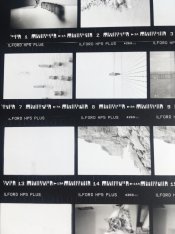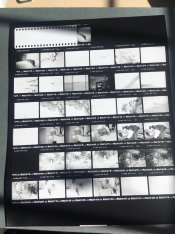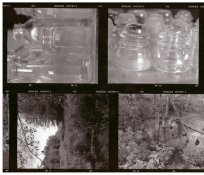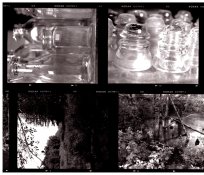NorthAtlantic
Member
I have a question as I’ve managed to completely confuse myself after spending quite a long time thinking I had a firm understanding of it all. Ive been shooting film again for last year and a half and develop it at home. Up until recently I purely scanned my negs and whilst there would be a few tricky customers (over exposed, dense negatives) overall metering didn’t seem a big problem using an incident meter in the classical sense - meter for shadows, aimed at camera / sometimes shade lumisphere as shadow surrogate.
However I recently started darkroom printing again – the confusion has arisen from making contact sheets again. I have used the method shown to me by exposing the contacts to achieve the minimum level of black around the sprocket holes. I was very surprised to see that lots of my dense negatives were pure white frames on the contacts which seem to suggest some kind large exposure error even though there are a lot of online articles extolling the virtues that bw film has a big latitude range and I’ve followed guidelines for basic incident meter use as far as I know. I also know people like Ralph Gibson prefer dense negatives and the old adage of expose for the shadows.
It seems like a common problem is people underexposing bw film and shooting in low light – weirdly I’ve found out I’m fine guessing low light exposures but seem to be overexposing sunlit / daylight shots using an incident meter which should be fairly fool proof. I guess my question is have you ever found the overexposed negatives just to be blank frames on contacts and is this a darkroom issue or a metering issue. I have also thought about refining my incident meter technique if I know I’m overexposing in daylight by not exposing for shadows or angling slightly more towards light areas to balance out – I’m aware this is unconventional but struggling to work out why those contact frames are white when contacts have been produced in correct way :S
Ive attached a few of the worst offenders, I did about 30 contacts and some were ok but regular problem with incident metering in daylight / sky blown out. I have a basic understanding of zone system and don't know if id be better off going reflected readings.
Many thanks
However I recently started darkroom printing again – the confusion has arisen from making contact sheets again. I have used the method shown to me by exposing the contacts to achieve the minimum level of black around the sprocket holes. I was very surprised to see that lots of my dense negatives were pure white frames on the contacts which seem to suggest some kind large exposure error even though there are a lot of online articles extolling the virtues that bw film has a big latitude range and I’ve followed guidelines for basic incident meter use as far as I know. I also know people like Ralph Gibson prefer dense negatives and the old adage of expose for the shadows.
It seems like a common problem is people underexposing bw film and shooting in low light – weirdly I’ve found out I’m fine guessing low light exposures but seem to be overexposing sunlit / daylight shots using an incident meter which should be fairly fool proof. I guess my question is have you ever found the overexposed negatives just to be blank frames on contacts and is this a darkroom issue or a metering issue. I have also thought about refining my incident meter technique if I know I’m overexposing in daylight by not exposing for shadows or angling slightly more towards light areas to balance out – I’m aware this is unconventional but struggling to work out why those contact frames are white when contacts have been produced in correct way :S
Ive attached a few of the worst offenders, I did about 30 contacts and some were ok but regular problem with incident metering in daylight / sky blown out. I have a basic understanding of zone system and don't know if id be better off going reflected readings.
Many thanks







 .
.

